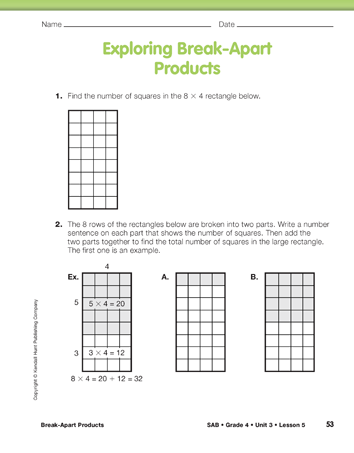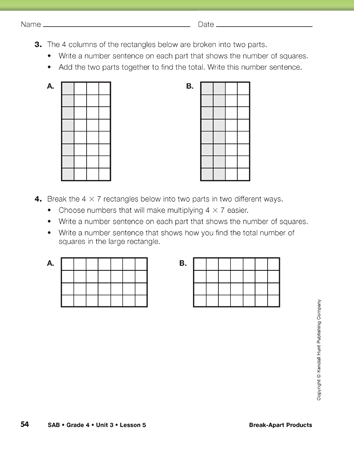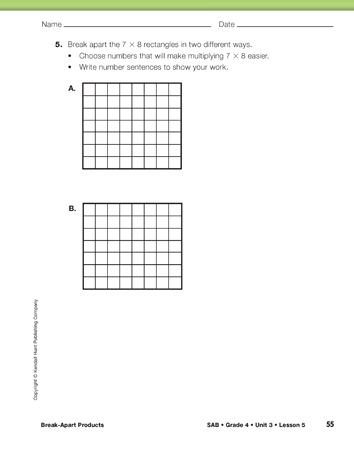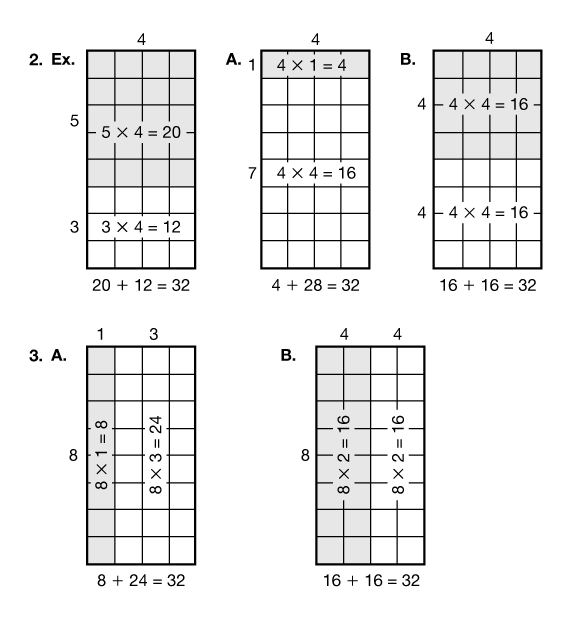Break-Apart Products
Est. Class Sessions: 2Developing the Lesson
Part 1. Exploring Break-Apart Products
Use Rectangular Arrays to Find Products. Display Questions 1 and 2 on the Exploring Break-Apart Products pages in the Student Activity Book. Ask students to find the number of small squares in the rectangle in Question 1.
Ask:
Give students a minute to solve the problem in pairs.
Then ask:
Some students might say, “I didn't use a strategy—it is one of the facts that I just know.”
If so, ask:
Model Break-Apart Products with Rectangular Arrays. Students explored the break-apart method in Grade 3, so some students might share this strategy. If so, ask them to demonstrate the strategy using the 8 × 4 rectangle.
If no one suggests a break-apart strategy, then explain that one way to solve a problem is to break it into smaller parts that are easier to solve.
Use the example in Question 2 to model this strategy. This rectangle is broken into two smaller rectangles as shown in Figure 1, a 5 × 4 rectangle that is shaded and a 3 × 4 rectangle that is not shaded.
Use the following discussion prompts:
Ask students to work with their partners to explore other ways to break an 8 × 4 rectangle into parts by completing Questions 2–3. Discuss their results. See Figure 1.
Ask:
Responses will vary to the question above. Choosing ways to break apart a product so that the numbers are easy to multiply simplifies the multiplication process. For example, choosing the break-apart strategy for the example in Question 2 is an efficient strategy. Since most students know their fives multiplication facts, they will likely know that 5 × 4 = 20 and adding 20 to 12 is easy to do with mental math. Using doubles as for the rectangles in Questions 2B and 3B is also a strategy students frequently choose.
Ask students to work in pairs to complete Questions 4–5.
As they work, ask:
Remind students to write a multiplication sentence on each smaller rectangle to show the number of squares in each part.
Ask:
Have students share their choices for breaking the rectangles into two parts with the class. Discuss which ways make the multiplication easier.
















